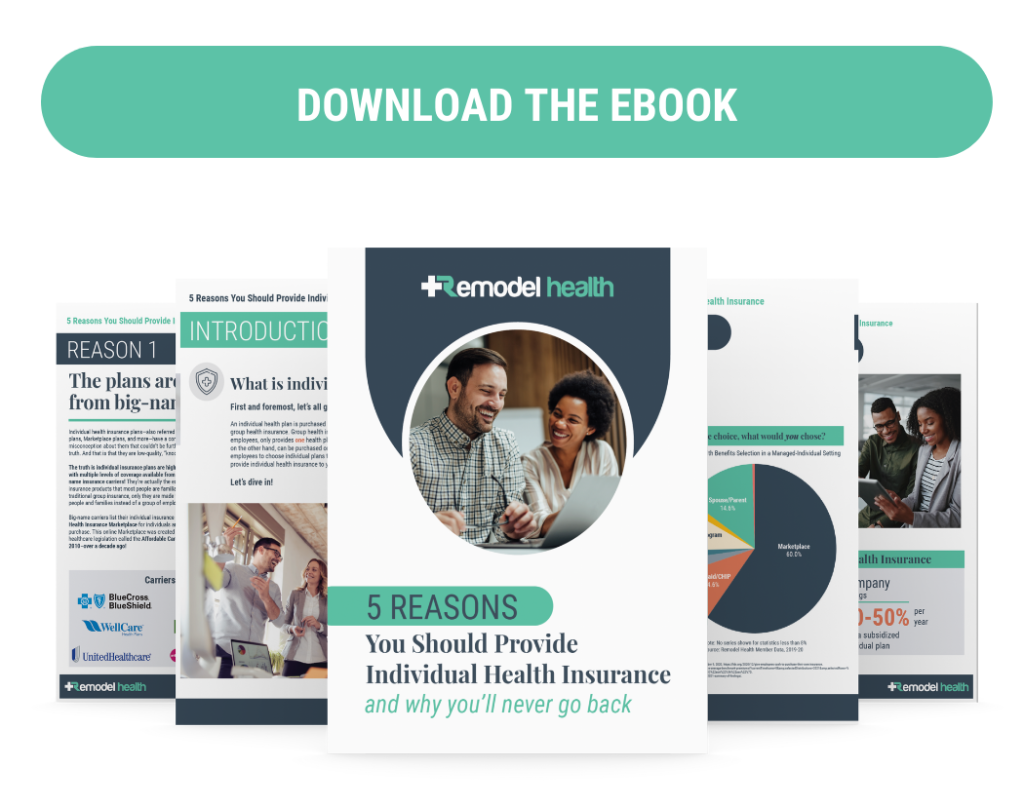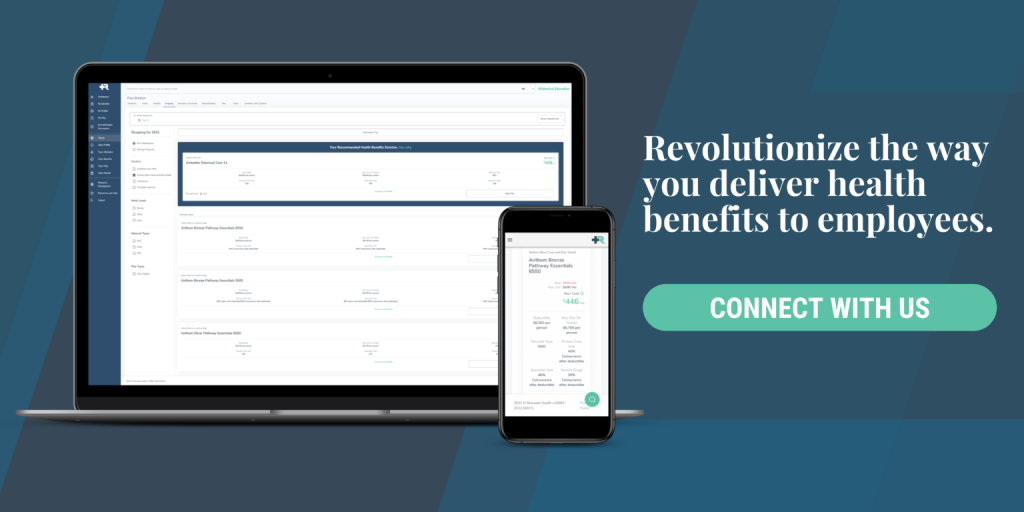Discounts have been doubled on health insurance. But they’ve remained largely unspoken about amidst the $2 trillion stimulus package. The American Rescue Plan — also affectionately known as “the $1,400 stimulus” bill — included more details on health insurance than could fit into any readable news article, so naturally it’s been mostly omitted.
In part 1 of this series, we looked at the increased subsidies for health plans. In part 2, we are going to look at the new subsidies that are available for people who did not previously qualify for them because they were above the income thresholds.
Pro Tip: if you want to see if this can help with group health benefits, skip to #3.
The changes brought by this third Covid-19 relief package have dramatically changed health insurance costs for the better. These lower rates are now live on Healthcare.gov. But as with most things in insurance, you’re probably wondering what this actually means for you.
So, here are the 3 things we’ll touch on:
1) what this means for real people,
2) the numbers working behind the scenes, and
3) how this particularly helps small businesses.
The reason we’re so excited about this new legislation is because healthcare has been on a downward trajectory for a long time. Often you may hear people blame the Affordable Care Act for all the problems we’re facing. But the reality is that the current drawbacks in healthcare have been on trend since the 70s.
The ACA surely did not accomplish everything that was promised. But it has provided an opportunity to rethink the way that we’ve always thought about health benefits. More importantly, one of the greatest flaws of the ACA has been fixed by The American Rescue Plan.
Let’s take a look at a few real life examples to understand how.
1. Real Life Example: Empty Nest Couple
Individual insurance products have individual prices based on the individual people. Specifically, 1) how old you are, 2) how much money you make, and 3) how many people live in your house.
Empty nest couples are older, make more money, and have less people living in their house. Which puts this demographic particularly at risk to be negatively impacted by high insurance costs!
If we look at the national average, a 60-year-old couple making $75,000 a year would be paying around $1,920 for the silver benchmark plan. That is over 30% of their total income. But the reality is that at their age, good health insurance is a necessity.
Now, because of The American Rescue Plan, they will actually save $1,389 per month, or $16,668 per year! Imagine what a couple that age could do with those kinds of savings!
For example, $15,000 invested over 5 years with an average compound interest of 10% could add nearly $100,000 in the bank toward retirement. These are life-changing savings that could make a huge impact on their personal budget.
2. Behind the Scenes
Now that we’ve seen a real life example, let’s take a look at how and why this works.
Before ARPA, if someone had a smaller family and made too much money, they wouldn’t get discounts on their health insurance. These discounts are also called “subsidies” but are technically Advanced Premium Tax Credits (APTCs). Discounts are based on the Federal Poverty Level (FPL) and they change based on household details.
If someone qualifies for a discount, it means they have a “cost limit” on the silver benchmark product. For example, perhaps they qualify at the 6% subsidy level, which means they will not spend more than 6% of their income on that plan. The rest of the cost of the product is then subsidized by the APTCs and they get to buy the product at a discounted price.
Before the third stimulus, these health insurance “discounts” were based on the ratio between how many people live in a house and how much money they made (i.e. the FPL). The problem was that discounts would not apply for anyone making 4x the Federal Poverty Level, known as “the 400% FPL cliff”.
This stark drop-off of discounts was problematic — and costly. Someone who made just $3,000 more than they expected would then actually see an increase of $3,000 on their annual health insurance premiums. Believe it or not, this is a mild example.
Now, thanks to ARPA, everyone can qualify for subsidies because this legislation caps everyone’s costs. The lower you are on the FPL, the less you have to pay. But even those with the highest cap (400%+) will only pay 8.5% of income for the silver benchmark plan.
In review:
1) more discounts are available for the families who need it most, and
2) discounts are now available to families who didn’t qualify before!
According to the Kaiser Family Foundation, 3.5 million people are now helped by these new subsidies. Which means that millions of lives are changing, and thousands of organizations have the potential to make huge impacts on their well-being and their futures!

3. Big Win for Small Businesses
So how does any of this apply to small businesses?
Well, with group health insurance renewals being projected at 18% at the end of 2021, you may realize you need to reevaluate your options. So you’re not alone in wondering that all of this can be leveraged for your own gain. Thankfully, it can!
Let’s look at an example of a small business in Georgia with 15 employees. They have been spending around $250,000 per year on their health insurance. Retaining and attracting talent is important to them, so they just considered it the cost of doing business. But after a tough year facing Covid-19, they have been struggling to find a quarter of a million dollars in the budget anymore.
Managed individual group benefits were on their radar, but it cost about the same as traditional group because not everyone on their team qualified for subsidies due to the 400% FPL cliff.
But now, because of the American Rescue Plan, all 15 employees qualify for subsidies. Since ARPA so dramatically decreases the cost of those individual plans, they will be able to save $77,000 this year alone!
Finally, relief has been made possible for small businesses to now have enough margin to thrive again.
Yes—this means you!
There is money on the table. Don’t leave it there! The reality is that there are better and cheaper ways to take care of your team without breaking the bank.
Remodel Health has a team of consultants ready to help to discover more options to care better for your team. Reach out to schedule a risk-free analysis and start taking control of your costs and quality more than ever before.

Important Notice: Remodel Health does not intend to provide specific insurance, legal, or tax advice. Remodel Health always recommends to consult with your own professional representation to properly evaluate the information presented and its appropriate application to your particular situation.
